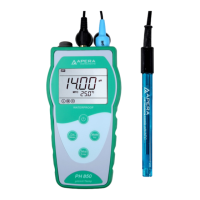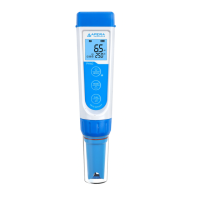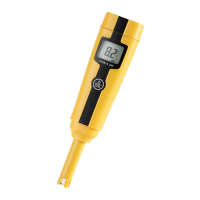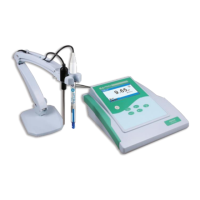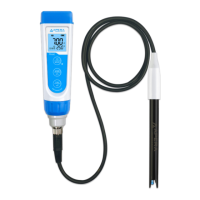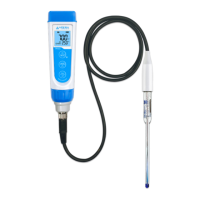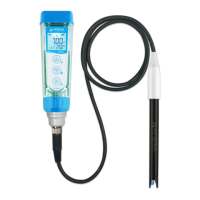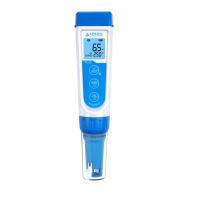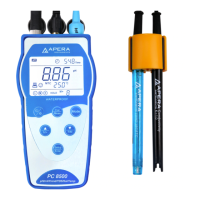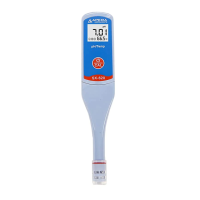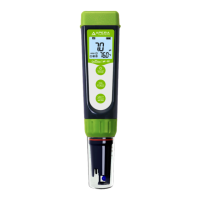9
socket. RCA socket connects temperature socket. When dipping pH electrode in the solution, please stir
the solution briefly to eliminate any air bubbles and allow it to stay in the solution until the reading is stable.
Note: The 201T-F Combination Glass pH/temp. Electrode is only suitable for general water solutions’ pH
measurement. For special applications such as low ion concentration or complex solutions, please refer to
Section 9 to find the most suitable pH electrode model.
4.2 pH Calibration Consideration
4.2.1. Standard buffer solution
The meter uses two series of standard buffer solution: USA series and NIST series, each series consists
of 5 groups solution, icons see Chart - 4
Chart - 4 pH standard buffer solution series
pH standard buffer solution series
4.2.2. Three-point calibration
The instrument can perform 1-3 points calibration. The first point calibration must be 7.00 pH (or 6.86 pH)
standard solution, then select other standard solution to perform the second and the third point calibration,
see Chart-5.
Chart - 5 Three-point calibration mode
7.00pH→4.00 or1.68pH
→10.01 or12.45pH
6.86pH→4.01or 1.68pH
→9.18 or 12.45pH
4.2.3. Calibration frequency
Calibration frequency depends on the sample, the electrode performance, and the required accuracy. For
high accuracy measurements (≤ ±0.03pH), the meter should be calibrated immediately before taking a
measurement. For general accuracy (≥ ±0.1pH), the meter can be calibrated and used for approximately
one week before the next calibration. The meter must be re-calibrated in the following situations:
(a) New probe, or probe that is unused for a long period of time
(b) After measuring acids (pH<2) or alkaline solutions (pH>12)
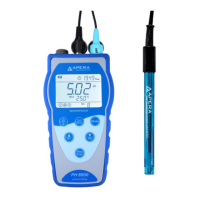
